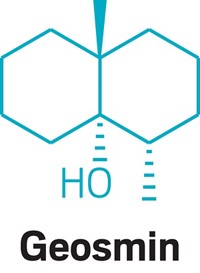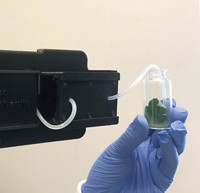Advertisement
Grab your lab coat. Let's get started
Welcome!
Welcome!
Create an account below to get 6 C&EN articles per month, receive newsletters and more - all free.
It seems this is your first time logging in online. Please enter the following information to continue.
As an ACS member you automatically get access to this site. All we need is few more details to create your reading experience.
Not you? Sign in with a different account.
Not you? Sign in with a different account.
ERROR 1
ERROR 1
ERROR 2
ERROR 2
ERROR 2
ERROR 2
ERROR 2
Password and Confirm password must match.
If you have an ACS member number, please enter it here so we can link this account to your membership. (optional)
ERROR 2
ACS values your privacy. By submitting your information, you are gaining access to C&EN and subscribing to our weekly newsletter. We use the information you provide to make your reading experience better, and we will never sell your data to third party members.
Analytical Chemistry
Technique Sniffs Out Mold In Film Archives
Cultural Heritage: Scientists find molecular signature produced by harmful microbes on film
by Sarah Everts
April 3, 2012

Like humans, fungi have a taste for old movies. Unfortunately, the microbes prefer to eat than watch the cellulose acetate film. This moldy predilection destroys valuable film in archives and poses safety concerns to conservators who are exposed to the fungal spores. Now researchers have developed a technique to detect the odor profile of fungi that have digested a meal of film (Anal. Methods, DOI: 10.1039/c2ay05826j).
The project started when the U.K.’s North West Film Archive approached a team led by Craig E. Banks and Gavin Bingley at Manchester Metropolitan University for help in distinguishing between mold and plain old dust on film.
The archive often receives donations of valuable film that has been stored in less-than-ideal locations, such as attics or basements, Banks says. Conservators often have to diagnose a potential fungal film infection by trying to grow the mold in a lab, which is time consuming and can pose a health hazard.
The new technique employs gas chromatography/mass spectrometry to detect molecules that float off mold communities after a hearty movie dinner. To find telltale compounds of a fungal infection, the team first cultured 17 kinds of fungi often found on contaminated film and collected the volatile molecules wafting off the cultures. They spotted more than 150 airborne molecules, but narrowed that number down to three key chemical markers of problematic mold metabolism: 1-octen-3-ol, 3-octanone, and 3-octanol.
One of the benefits of the technique, Bank says, is that it can detect mold metabolism before the fungal growth is easily seen by eye. He thinks the technique could provide an early warning for film archives.





Join the conversation
Contact the reporter
Submit a Letter to the Editor for publication
Engage with us on Twitter